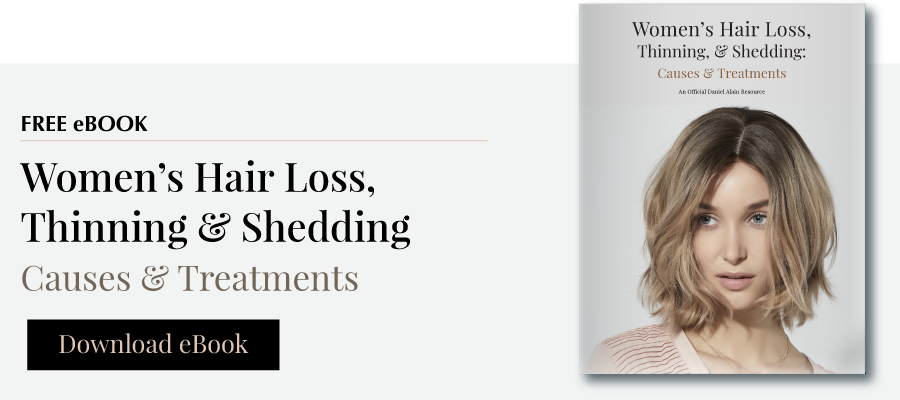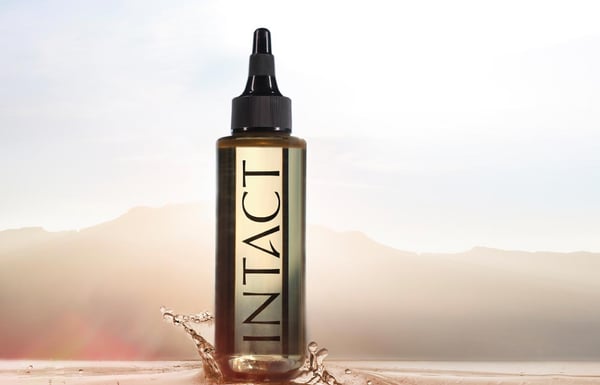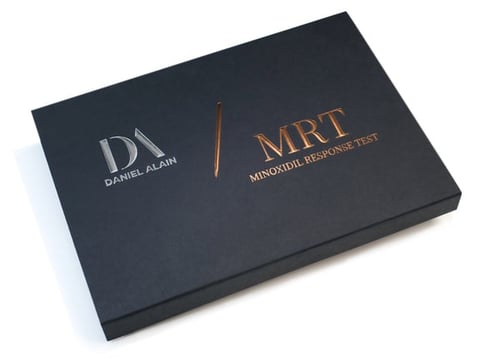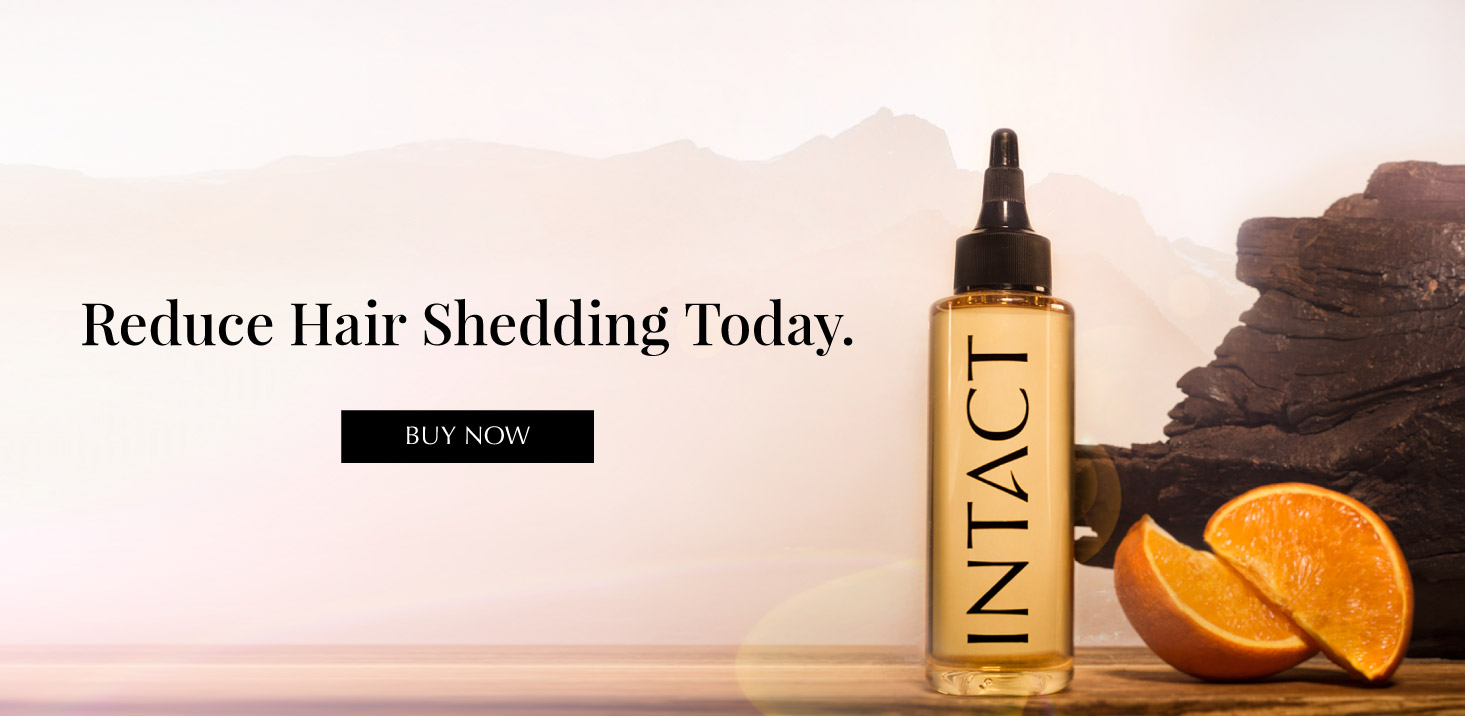Hair Shedding | Minoxidil | Hair Loss Testing | Hair Loss | Women's Minoxidil
How to Control Hair Fall in Women
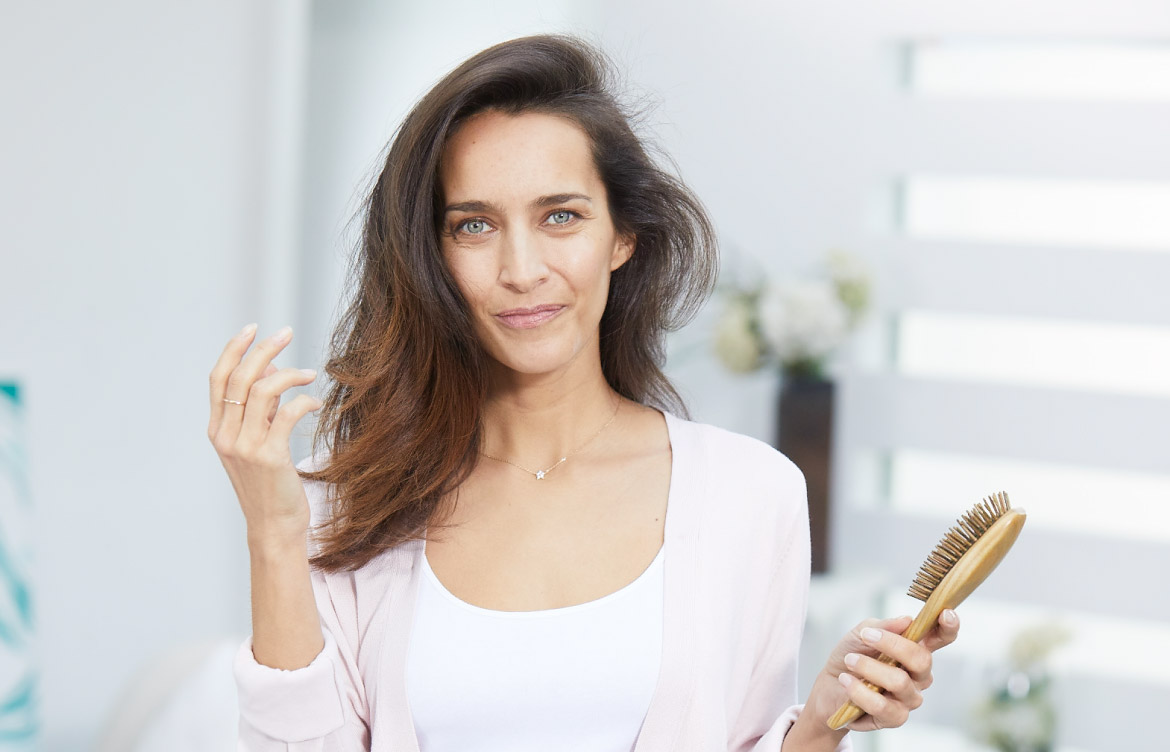
Some days, it feels like battling hair loss is a full-time job. Strands amass throughout your life, serving as constant reminders of this one, all-encompassing issue that seems like it has spun completely out of control. You’ve tried various supplements and hair treatments, but maybe their potency was short-lived, and they didn’t show you how to control hair fall.
Here’s the thing: hair fall control is in your reach, even if it doesn’t feel like it right now. Learning your specific hair loss cause is the first step in revealing the best way to control hair fall.
Daniel Alain is in your corner, and we’ve rounded up all the possible hair fall causes, solutions, and tips to help you learn how to control hair fall once and for all.
You’re eager to learn about hair fall control for women, but there’s one important thing we need to cover first: hair fall causes. Why?
Learning how to control hair fall means we need to trace the exact source that’s causing your strands to flutter.
Download Our Guide to Women's Hair Loss, Thinning, & Shedding: Causes & Treatments
Why Does My Hair Fall Out?
Hair fall can stem from a hundred different reasons. In this section, we’ve boiled down the most common causes of hair loss, along with high-shedding activities.
Washing
Everybody loses hair in the shower, whether they have a hair loss condition or they have voluminous, thick hair. That’s right; even Angelina Jolie loses some hair strands before flaunting her long, flowing strands on the red carpet.
Your hair strands are most delicate and vulnerable when they’re wet. It’s normal for perfectly healthy hair strands to fall in the shower. However, large hair clumps might indicate an underlying hair loss issue.
Our advice? Don’t wash your hair every day, and buy a shower mirror. You’ll catch which sections you already rinsed so you don’t overwash your locks. Remember to check out our hair washing guide for more tips!
Brushing
Brushing your hair is soothing – there’s comfort in running your fingers through soft strands.
But brushing is another high-shedding activity. In fact, one medical study linked participants who brushed most frequently with greater hair loss. The sweet spot? Twice a day, once in the morning and once at night, is perfectly adequate for brushing.
Styling
Styling is the third musketeer of high-shedding activities. Ever notice hairs gently blowing away as you blow-dry your hair? Most of the time, it’s normal. The heat damages and weakens your strands’ cuticles (outer layer), which happens when curling, straightening, and blow-drying your hair.
So, how do you pull off a sumptuous J-LO blowout without compromising your tresses? We have a few hair fall control tips for your next doll-up session.
One study recommends you keep a distance of 15 cm between your hair and the blow-dryer. Additionally, keep the air flowing without focusing too much heat on one section to minimize heat damage.
Malnutrition
Nutrition often dictates how we feel, but it’s easy to forget its effects on our hair. High-sugar diets and ultra-processed foods might have your hair follicles packing their bags for good!
Just kidding – they’ll return home if you create a welcoming environment packed with hair growth-boosting nutrients, including:
- Iron
- Protein
- Calcium
- Vitamin B12 and D
- Omega fatty acids
Of course, a girl’s gotta indulge. It’s hard to be on top of your diet all the time, especially if you’re dealing with the stress of hair loss. You might consider taking some supplements instead, but nutritionists caution against relying too heavily on supplements alone. That’s why it’s best to pair supplements with a nutrient-rich diet as well!
Need some guidance? A doctor or certified dietitian is a great place to start. They’ll also help you determine if you’re dealing with any hormonal issues.
Hormonal Imbalances
Nothing puts your emotions out of whack more than hormones. But these bodily messengers affect more than just your mood.
Let’s start with estrogen. Women should have even amounts of estrogen and progesterone, but many women end up with estrogen dominance. The result? Hair loss.
But what causes estrogen dominance? One too many margaritas could be one factor, as alcohol increases estrogen production. Other factors that lead to estrogen dominance include poor liver health, medical conditions like cancer or endometriosis, or chronic stress.
Speaking of stress, that warrants a whole other hormone discussion around cortisol. Your body releases cortisol when you’re stressed out, leading to high blood pressure, weight gain, and, you guessed it: hair fall.
You might wonder how to control hair fall if your hormones are out of whack. First, consult your doctor to learn about lifestyle changes that might help.
Health Conditions
Plenty of health conditions feature hair loss as a symptom. It’s easy to miss them as hair loss causes, especially if the condition has a whole host of other symptoms.
For example, syphilis is an STI that causes rashes, weight gain, muscle weakness, and even neurological damage if not treated quickly. But some patients with syphilis experience hair loss, too.
Endometriosis, cancer, autoimmune disorders like Graves’ Disease, and even diabetes can cause hair loss.
Thyroid conditions might also cause hair fall in some people.
Thyroid Issues
There are two main thyroid issues, and each can contribute to hair loss in some women.
- Hypothyroidism (underactive thyroid): The thyroid doesn’t produce enough hormones, causing fatigue and weight gain.
- Hyperthyroidism (overactive thyroid): The thyroid produces too many hormones, causing weight loss and irregular heartbeats.
Fortunately, treating a thyroid disorder is relatively straightforward and often managed with prescribed medications. Hair will usually grow back within a few months, as long as you can minimize any potential stress triggers.
Stress
Do you ever notice that you’re more forgetful when you’re stressed out? Short-term memory loss is a stress symptom you might not consider amidst more debilitating symptoms. Another less talked-about symptom?
Stress-related hair loss, also known as telogen effluvium.
Hair loss researcher Vladimir A. Botchkarev notes volumes of evidence demonstrating the link between stress and alopecia areata. He goes further to describe specific effects that stress has on the hair follicle, like preventing growth and causing inflammation.
While stress can be toxic to your hair follicles, there’s usually always a cure. Lifestyle changes, exercise, healthy eating, therapy, and meditation are excellent stress management techniques.
Once you find one that works for you, your hair should stop falling like leaves—speaking of leaves…
Seasonality
We’re more like animals than you think! Seasonal hair shedding is a prime example. Just like snakes, birds, and wolves shed, humans do too.
Expect to notice a few more dangling hair strands in the late summer months. But if you already have a hair condition like dry scalp, cold weather might worsen it, causing even more hair fall.
Don’t worry, seasonal hair loss is temporary. Come Springtime, expect a new flock of flowing strands along with the budding roses.
Pregnancy
Some women glow during pregnancy with full, shiny locks and radiant skin. Most women experience an extended anagen phase during pregnancy, where hair actively grows.
However, some women experience hair loss during pregnancy because of hormonal imbalances. These symptoms usually subside throughout the course of the pregnancy.
In fact, pregnancy isn’t the stage where hair loss is most common or significant. It’s post-pregnancy where your hormones drop dramatically and cause the most hair loss.
Time heals most things, including postpartum hair loss. Give it a few months, and your hormones (and hair) will go back to normal.
What to Do to Control Hair Fall
We’ve covered our bases with hair loss causes. What can you do about it? Next, we’ll share our top hair control tips and solutions!
Use an Anti-Hair Fall Treatment to Retain Your Hair
INTACT Anti Hair Shedding Treatment - starts at $27.00
The best hair fall control strategy has two goals: retaining existing hair and regrowing lost hair. A hair fall treatment like INTACT from Daniel Alain can help you with retention.
Daniel Alain’s lab-formulated anti-shedding treatment was created by leading dermatologists, peer-reviewed and tested. INTACT’s patented PiliLock® Sevilla Orange Complex literally locks hair in at the root, constricting tiny follicular muscles around the strands to stop hair fall during high-shed activities.
Here’s what one of our customers says about the treatment:
“So I just tried Intact Hair because I’ve been looking for something to keep my hair voluminous, thick and shiny and it’s amazing! It reduces hair shedding and works in just ONE use. It’s also vegan-friendly and not tested on animals!
INTACT is an excellent start if you’re dealing with hormonal, dietary, or stress-related hair loss.
Adjust Your Diet & Lifestyle
Remember how we mentioned nutrition and stress as causes of hair loss? Some dietary and lifestyle changes might regrow those lost locks.
First step? Find out if you’re missing any essential nutrients. A doctor can glean this information from a blood panel test. Next, figure out a healthy eating plan that covers those missing vitamins.
Take some time for yourself. Stress surfaces from work, relationships, and mental health issues—all common life aspects you can’t necessarily avoid. But you can invite more zen into your life with de-stressing activities such as yoga, meditation, long walks, journaling, aromatherapy, or hot baths.
See if Minoxidil Will Work to Regrow Your Hair
Minoxidil + INTACT might be your topical power duo to tackle hair loss: Minoxidil for regrowth, and INTACT for retention.
Many women experience improved hair density and regrowth with Minoxidil, a drug commonly sold under the brand name Rogaine®. However, we recently learned that you’ll only respond to the treatment if your scalp has the necessary SULT1A1 enzyme activity to activate the drug.
This explains why so many people had to wait months to years to see results! But for many, results never came.
How do you know if you’re a responder?
Minoxidil Response Kit - $139.00
Protect your time and energy with Daniel Alain’s Minoxidil Response Kit (MRT), the fastest way to know for certain if Minoxidil will work for you.
Regrowth isn’t an option for many women. If that’s the case, it’s vital to reclaim your self-image and feel confident again. The solution?
Wear a Beautiful Wig
There’s no quicker hair fall solution than a voluminous, soft, quality-made human hair wig. No waiting for regrowth. No limitations on colors or styles.
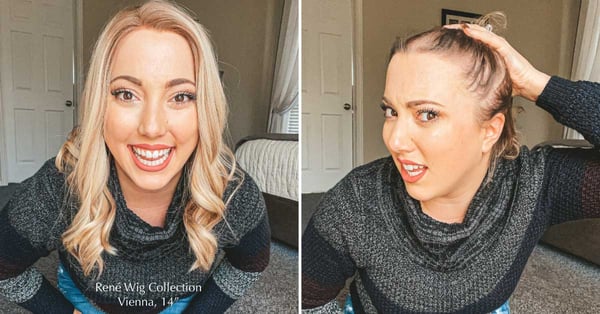
Jen Brown (@being_mrs_brown) is wearing René Wig, Follea by Daniel Alain
Only fabulous hair days every day of the week.
Take Daniel Alain’s Follea collection, for example. Talented wig artisans hand-tie each wig with premium, 100% European human hair. Quality construction ensures a secure fit, while only the finest materials promise an undetectable look.
See for yourself and browse our Follea collection!
It’s Time to Take Control of Hair Fall with Daniel Alain
For too long, hair loss has made women feel embarrassed, stressed, and helpless. But those days are over. No longer will hair loss lock you indoors and intrude on your personal life.
Learning how to control hair fall gives you back the power that hair loss has stripped from you. Your life changes the second you take action.
Now, you’re armed with the crucial knowledge about nutrition, lifestyle tips, cosmetic ideas, and hair loss solutions to carve a path forward that, with every step, makes you love your hair again.
Ready to try the world’s fastest-acting hair fall treatment? Shop for INTACT today. Schedule a consultation with one of our stylists to discuss your options and find aligned solutions!
More questions? We have answers!
Frequently Asked Questions
Does INTACT Actually Control Hair Fall?
Yes! While INTACT can’t regrow lost hairs, its patented technology secures hairs at the root during high-shedding activities to prevent hair fall.
Is INTACT Safe for My Hair?
Yes, INTACT is safe to use on your hair, even if you’re vegan or have colored hair. The formula doesn’t contain silicones, parabens, mineral oils, artificial dyes, SD-alcohol, or gluten. Furthermore, our skilled team of dermatologists and scientists researched, developed, and tested INTACT with safety and efficacy practices, including peer-reviewed clinical studies.
How Do You Properly Apply INTACT?
INTACT is incredibly easy to use. Here’s what you need to do:
- Use INTACT before you take a shower and wash your hair.
- Make sure your hair is dry.
- Gently brush out any tangles.
- Use the applicator to extract the recommended portion of INTACT.
- Apply the formula evenly to different sections along your scalp.
- Massage the treatment for 2-3 minutes.
- Leave on for 30 minutes.
- Shampoo your hair and continue with your regular hair routine.
Should I Use INTACT Every Day?
It’s safe to use INTACT every day, but for best results, coordinate the application with the days you wash your hair.
Does INTACT Regrow Hair?
No, INTACT is a cosmetic hair solution and does not regrow hair. However, it prevents further hair loss by securing your hair strands at the root with its patented PiliLock® Sevilla Orange Complex.
What Happens If I Wash INTACT Out of My Hair in Less Than 30 Minutes?
INTACT won’t work as effectively if you wash it out in less than 30 minutes. For best results, we recommend leaving the treatment on for the full half hour. While the treatment works its magic, catch up on emails, call a friend, or drink a cup of tea.
How Can I Control Hair Fall in the Shower?
Remember, showering is a high-shedding activity so you won’t eliminate hair fall completely. However, you can control your hair fall with a few quick tricks:
- Use a shower mirror: When washing your hair, you often can’t see the back of your head. This might encourage you to overwash certain areas to ensure you get all the shampoo or conditioner out of your hair. A shower mirror will reveal which parts of your hair are soapy or rinsed, minimizing your time scrubbing. Pro tip: make sure you’re using a fog-free mirror!
- Switch to warm or cold water: Did you know your hot shower could be exacerbating your hair loss? Although it feels soothing, too much hot water can damage your hair roots.
- Buy a shower filter: Shower filters minimize shower water chemicals and minerals like chlorine that could be stressing out your follicles.
How Can I Control Hair Fall When Brushing?
Pulling out hair clumps from your brush is nerve-wracking. Follow these easy tips to minimize hair fall while brushing:
- Pick the right brush: Switch out your hairbrush every few months and use a detangling brush after you shower. Additionally, opt for brushes with soft bristles or a wide-toothed comb.
- Be gentle: If you have a tough knot in your hair, you might aggressively brush it to get it out ASAP. That’s a sure way to increase your hair fall. Be careful to brush slowly and mindfully to avoid over-brushing.
- Brush from the bottom: Don’t start brushing from the root if the rest of your hair is tangled. Instead, start halfway down and comb out any pesky knots first. Then, move the come upward and brush out tangles. Do this until you reach the roots.
- Brush while dry: Wet hair is delicate and prone to shedding already—brushing while wet can make it even worse. Let your hair air-dry at least partially before brushing.
How Can I Control Hair Fall When Washing?
Hair washing is a high-shedding activity, but you can mitigate it with:
- Shower mirrors
- Shower filters
- Cold/warm water vs. hot water
How Can I Control Hair Fall When Blow Drying?
Blow-drying doesn’t just blow away dampness—your hair strands sometimes blow away as well! To mitigate, try these tips:
- Switch to cooler temperatures: Heat damages hair roots, so switch to a cooler setting when possible.
- Even it out: Try to give all your hair strands an equal amount of TLC. If you blow- dry one section too intensely, you risk damaging your hair with heat.
- Minimize blow-drying in general: Experts found that blow-drying on the highest heat causes the most damage to the hair surface. Opt for air dry or towel dry every so often to mitigate.
What is the Best Way to Immediately Control Hair Fall?
Our hair fall treatment, INTACT, starts retaining your existing hairs after only 30 minutes of use and reduces shedding by 77%. We can’t think of any faster way to control hair fall!
Can Birth Control Make Your Hair Fall Out?
Yes, some birth control pills have a high androgen index, a hormone known to contribute to hair loss.
What Vitamins are Good for Hair Fall Control?
The following vitamins and minerals could help with hair fall control:
- Vitamin D and B12
- Calcium
- Iron
- Protein
- Omega fatty acids
Can COVID Cause Severe Hair Fall?
COVID-19 might cause a stress-related hair loss condition called telogen effluvium. Telogen is your hair growth cycle’s resting phase (often combined with exogen, the shedding phase). Usually, 10% of your hairs stay in the telogen phase at any given time. One MD describes some patients having up to 50% of their hair strands in the telogen phase after COVID-19. These symptoms should subside once the stressor (in this case, COVID-19) goes away.
What is Normal Hair Fall in a Day?
Losing 50-150 hair per day is considered normal hair fall. In the late summer, seasonal hair shedding might slightly increase that number.
How Can I Control Hair Fall Naturally?
The most natural way to control hair fall is by managing stress and changing your nutritional habits. Keep in mind that this route will take some time, while hair fall treatments like INTACT work in just 30 minutes.
What Should I Eat to Control Hair Fall?
Stock up on hair-growth boosting foods with the following nutrients:
- Proteins: Lean ground beef, chicken, nuts, and legumes
- Vitamin D: Liver and egg yolks
- Calcium: Yogurt, almonds, and squash
- Vitamin B: Red meat, leafy greens, and raisins
- Omega fatty acids: Salmon, sardines, and walnuts
Does Aloe Vera Control Hair Fall?
Aloe vera is rich in nutrients like calcium, selenium, Vitamin B12, and fatty acids known to improve hair loss. Ancient civilizations have used aloe vera for thousands of years to heal certain skin ailments. However, more research is needed to assess aloe vera’s effects on hair loss. It may be worth a shot as a complementary aid, but not a complete solution.
Does Coconut Oil Control Hair Fall?
Coconut oil boasts more benefits than softness. One study showcases its superiority to other oils in penetrating and hydrating the hair shaft and reducing protein loss while washing your hair.
Does Onion Juice Control Hair Fall?
Onion juice is one of those rumored hair loss home remedies that actually works. One study found that onion juice supported hair growth in 73.9% of participants after only one month — significantly higher than the participants who only used tap water. Multiple studies describe the natural remedy as especially effective for people with alopecia areata, and men over women.
What's the Best Way to Control Hair Fall?
Hair fall remedies aren’t one-size-fits-all. The first step in controlling hair fall is to find out your hair loss cause by consulting a doctor or getting genetic hair loss testing (coming soon from Daniel Alain). Use medically approved recommendations based on your diagnosis. Anti-shedding solutions like INTACT can help to minimize hair fall.
Can Oiling Control Hair Fall?
Oiling is a double-edged sword when it comes to hair fall. On one hand, coconut oil and peppermint oil are known to reduce hair fall and promote hair growth, respectively. However, hot oil treatments are notorious for irritating the hair follicles and causing more damage.
What are the Best Home Remedies to Control Hair Fall?
Onion juice and coconut oil are the best home remedies to control hair fall.
Can I Control Hair Fall With a Shampoo?
Some shampoos are healthier than others, with less harsh chemicals that can cause hair fall. However, a shampoo switch shouldn’t be your only strategy. One hair transplant doctor describes shampoo as having a minimal effect on hair loss because it only interacts with our hair for a short period.
Can Hair Regrow After Hair Fall?
Yes, hair can regrow after hair fall in certain situations. For example, Minoxidil improves hair density and regrows hair in responders. Likewise, hair regrowth can occur after a lifestyle change or minimized stressor, specifically for people with telogen effluvium.
Why Does Women’s Hair Fall Out?
Women’s hair falls out for many reasons, including nutrition, hormones, pregnancy, genetics, and more.
Do I Need to See a Doctor to Control My Hair Fall?
Yes, it’s always a good idea to consult a doctor once you notice hair fall symptoms. They’re best equipped to advise you on the path forward.
What Is the Best Product to Control Hair Fall?
INTACT is the fastest-acting hair fall product with the least harmful ingredients for your hair. With every 30-minute application before showering, your roots will stay in place.


